در این مطلب نحوهی انتقال اطلاعات در یک کانال فیبرنوری، انواع فیبرنوریهای شیشهای و انواع اتصالات فیبرنوری را به طور کامل، برای شما توضیح میدهیم .
اصول مربوط به تکنولوژی انتقال توسط نور
اطلاعات (دیتا) از طریق پورت فرستنده (Tx) در یک دستگاه اکتیو برای پورت گیرنده (Rx) در دستگاه دیگری ارسال میشود. از آنجایی که تمام آی سیها با انرژی الکتریسیته کار میکنند، از دیودها و فتوترانزیستورهای نوری برای ارسال و دریافت سیگنالهای نوری استفاده میکنند. برای این منظور باید در ابتدا و انتهای کابل از دستگاههای تبدیل کننده (Converter) استفاده شود تا الکتریسیته به نور (نامرئی) تبدیل کرد. طول کانال فیبر نوری برای انتقال اطلاعات توسط پارامتر افت (Attenuation) و پراکندگی نور (dispersion) محدود خواهدشد.
انواع طول موجها در نور
محدوده طول موج نور مرئی برای انسانها تا 690 نانومتر است و طول موجهای بیشتر در دسته بندی نورهای نامرئی (infrared array) قرار میگیرند. فیبرهای نوری با توجه به تکنولوژی ساخت و مواد بکار رفته در آنها طول موجهای مختلفی است که در تصویر زیر آنها را مشاهده میکنید. دسته اول فیبرهای نوری پلاستیکی یا POFها هستند که طول موجهای بین 520 تا 650 نانومتر را از خود عبور میدهند. دسته دوم فیبرهای نوری فتونیک کریستال هستند و طول موج نور عبوری آنها بین 650 تا 850 نانومتر میباشد. دسته سوم فیبرهای نوری شیشهای یا GOFها هستند که در دو نوع چند حالته و تک حالته تولید میشوند. نوع اول طول موجهای 850 تا 1300 نانومتر را پشتیبانی میکند و نوع دوم برای انتقال طول موجهای 1310 تا 1650 نانومتر به کار میرود.
ضریب شکست و بازتاب نور
ضریب شکست زمانی اتفاق میافتد که نور، برای مثال از یک محیط رقیق وارد محیط غلیظ شود. این ضریب که به آن refraction نیز میگویند در انتقال اطلاعات داخل فیبر نوری تاثیر بسزایی دارد. در شکل زیر میتوانید انواع شکست و بازتاب را درون فیبر نوری مشاهده کنید.
انواع تکنولوژی ساخت هسته با ضریبهای شکست مختلف
در شکل زیر سه نوع هسته که با تکنولوژیهای مختلف ساخته شدهاند را مشاهده میکنید. نوع اول از سمت چپ که به step index شهرت دارد برای انتقال نور درون هسته از بازتاب نور پوشش clad دور هسته استفاده میکند.
نوع دوم تکنولوژی ساخت هسته که multi-step index نام دارد از چندیدن لایه مختلف برای شکست نور داخل هسته استفاده کرده است. نوع سوم تکنولوژی ساخت هسته فیبر نوری نیز که به graded index مشهور است را میتوانید در شکل سوم مشاهده کنید.
انواع فیبرنوری شیشهای
فیبرنوری چند حالته (multimode FO): این نوع از فیبرهای نوری دارای هسته ضخیمتری نسبت به فیبرهای نوری تک حالته هستند. منبع نوری که برای این مدل از فیبرهای نوری به کار میرود، LEDها هستند زیرا نور را در چندین طول موج متفاوت منتشر میکنند. دسته بندی این فیبرهای نوری در انواع مختلف شامل OM1، OM2،OM3 و OM4 میشود. لازم به ذکر است این نوع کابل محدودیت طول برای سرعتهای 10، 40و 100 گیگابیت اترنت را دارد و باید با توجه به مسافت کابلکشی نوع آن را تعیین کرد.
فیبرهای نوری تک حالته (single mode FO): برعکس فیبرهای نوری چند حالته هستهی نازکتری دارند و قطر هستهی آنها بسیار کوچکتر است و همچنین نورهای با طول موج بالا (منبع نوری این نوع فیبرها لیزر است) را درون هسته منتشر میکنند. لیزرها به عنوان یکی از پیشرفتهترین وسایل الکترونیکی دارای قیمت بالاتری نسبت به LEDها هستند که همین امر موجب گرانتر شدن تجهیزات اکتیو پشتیبانی شده توسط این نوع کابل فیبر نوری (Fiber Optic Cable) میشود. همونطور که میدانید لیزر تنها یک طول موج نور را با قدرت زیاد منتشر میکند و بنابراین این کابلها تنها یک طول موج نور را درون هسته 9 میکرومتری خود منتشر میکنند. به همین دلیل است که به آنها کابلهای تک حالته گفته میشود. همچنین با توجه به قدرت نور منتشر شده از لیزر، محدودیتهای طولی در این نوع از کابلها وجود ندارد و میتوان آن را به راحتی تا 40 کیلومتر نیز، نصب کرد.
استاندارد برای فیبرهای نوری پارامترهای مشخصی علاوه بر نوع تک حالته یا چند حالته بودن را تعیین کرده است که در ذیل به برخی از این پارامترها اشاره خواهیم کرد:
ابعاد: منظور از ابعاد شامل قطر هسته، قطر پوشش دور فیبر نوری (Fiber Optic)، پوشش ثانویه محافظ فیبر نوری، محدودیتهای کشیدگی یا کشیدن فیبرهای نوری و متحدالمرکز بودن فیبر نوری است که در هنگام سفارش کابل فیبر نوری باید به آن دقت کرد. شکل زیر نشان دهندهی انواع کابل فیبرنوری منحدالمرکز است.
-
خواص مکانیکی
این خواص شامل محدودیتهای طولی، قدرت کشش، برداشتن راحت روکشهای کابل و حلقه کردن کابل فیبر نوری از خواص مکانیکی هستند.
انتقال: منظور از انتقال در نظر گرفتن خواصی همچون جذب (Absorption)، طول موج نور عبوری از کابل، پراکندگی نور، تلفات مربوط به شعاع ماکرو و دیافراگم کابل فیبر نوری (aperture) است که هر کدام از آنها بر روی نور اثر بسزایی میگذارند و موجب تلفات و افت شدت نور میشوند.
-
شرایط محیطی
این عوامل عبارتند از میزان رطوبت و تغییرات دمای محیطی که کابلکشی در آن صورت میگیرد.
افت شدت نور در کابلهای فیبرنوری
افت در کابل فیبر نوری (Fiber Optic Cable) موجب کاهش کارایی یک کابل فیبر نوری میشود. افت شدت نور در کابل فیبر نوری عوامل مختلفی دارد که عمده ترین آن ها عبارتند از خم کردن کابل فیبر نوری، طولانی تر شدن کابل، جوش دادن دو رشته فیبر نوری به یکدیگر و یا استفاده از آداپتورهای فیبر نوری برای برقراری ارتباط بین دو رشته فیبر نوری. در کل اگر بخواهیم دو عامل اصلی افت را بیان کنیم عبارتند از:
پراکندگی (dispersion)
اتصال (connection)
میزان افت بوجود آمده توسط این دو عامل را با دسیبل dB اندازه گیری میکنند.

پراکندگی (Dispersion)
پراکندگی تاثیر بسزایی بر روی پهنای باند و سیگنال دریافتی یا خروجی از فیبر نوری دارد. اگر به این پارامتر که آن را در دو نوع بیان میکنند توجه نداشته باشید ، هنگام انتقال سیگنال از فیبر نوری با مشکل مواجه خواهید شد. Modal dispersion یا پراکندگی مودال و material dispersion یا پراکندگی مواد از انواع مختلف پراکندگی هستند. این پارامتر در اثر اختلاف زمانی بوجود میآید که طول موجهای مختلف نور مسیر خود را طی میکنند.
انواع اتصالات فیبرنوری
برای اتصال کابلهای فیبر نوری به یکدیگر سه روش مختلف وجود دارد:
روش اول اتصال دهندههای جدا شدنی هستند که امروزه بسیار پرکاربرد هستند. این اتصالات از یک کانکتور و یک آداپتور تشکیل شده است.
روش دوم اتصال دهندههای جوش مکانیکی هستند که امروزه زیاد مورد استفاده قرار نمیگیرند. از این اتصال دهندهها در ابتدای شروع به کار فیبر نوری استفاده میکردند. نحوه استفاده از آنها به این ترتیب بود که دو فیبر درون یک محفظه که از قبل با نوعی ژل پر شده بود، کاملا روبروی هم قرار میگرفتند و نور از یک فیبر به فیبر دیگر منتقل میشد. رفته رفته با پیشرفت تکنولوژی این روش تقریبا منسوخ شد.
روش سوم اتصال دهندههای دائمی جوش فیوژن هستند که همانند نوع اول اتصال دهندهها، امروزه بسیار پر کاربرد هستند. این اتصالات توسط دستگاهی به نام فیوژن برقرار میشوند.
حال اگر این سوال برای شما پیش آمده که اتصالات خود را با کدام یک از این سه روش باید انجام دهید، باید این دو موضوع را بررسی کنید.
شرایط پروژه: شامل نوع کاربری کابل فیبر نوری در پروژه، الزامات استاندارد مربوطه، تجهیزات اکتیو، شرایط محیط کابل کشی شده است. کاربری کابل فیبر نوری با توجه به این که شما داخل ساختمان یا بیرون از آن قصد کابل کشی را دارید، تعیین میشود. در برخی اوقات از کابلهای دو منظوره که هم برای کاربریهای داخل و هم بیرون ساختمان تولید شدهاند نیز استفاده میشود. همچنین استانداردهای کابل کشی از جمله استاندارد ISO 11801 الزاماتی را برای کابلهای فیبر نوری مشخص کرده است که در حین نصب باید حتما به آن ها توجه کرد.
تکنیک برقراری اتصال: در اینجا شما باید ابزارها، هزینهها و مقرون به صرفه بودن و مهمتر از همه توانایی نیروهای خود را برای انتخاب نوع اتصال فیبر نوری در نظر بگیرید. این عوامل به شما کمک خواهند کرد که در طول پروژه کابل کشی شبکه هیچ گونه مشکلی برای شما پیش نخواهد آمد.
اتصال دائمی فیبرهای نوری
این اتصال که توسط دستگاهی به نام فیوژن صورت میگیرد بیشتر برای پیگتیلهای فیبر نوری کاربرد دارد. در برخی پروژهها شما با استفاده از این نوع اتصال، پیگتیلها و کابلهای درون پچ پنل را به یکدیگر جوش میدهید و سپس آنها را درون کاستهای داخل پچ پنلها قرار میدهید. نحوه اتصال به این ترتیب است که شما ابتدا روکشهای کابل فیبر نوری را برداشته و آن ها را با دستگاه برش، میبرید. سپس پیگتیل و کابل را درون دستگاه قرار میدهیم و عملیات جوش را انجام میدهیم. در شکل زیر دستگاه برش کابل فیبر نوری، دستگاه فیوژن و عملکر الکترودهای این دستگاه به هنگام جوش دو فیبر به یکدیگر را مشاهده میکنید.

اتصال دهنده مکانیکی فیبرنوری
این نوع از اتصال با دستگاه و یک محفظه مخصوص صورت میگیرد. نحوه اتصال به این شرح است که ابتدا هر دو بخش انتهایی فیبر را همانند اتصال دائم با دستگاه برش، قطع میکنند و سپس آنها را درون یک محفظه که در وسط آن مقداری ژل مخصوص وجود دارد قرار میدهند. در نهایت دستگاه بصورت مکانیکی این دو رشته فیبر را در نزدیکترین حالت نسبت به هم قرار میدهد تا اتصال برقرار شود، بطوریکه دو رشته فیبر بطور کامل درون ژل مخصوص قرا میگیرند. شکل زیر دستگاه اتصال جوش مکانیکی و نحوه اتصال دو فیبر توسط این روش را به خوبی نمایش میدهد.
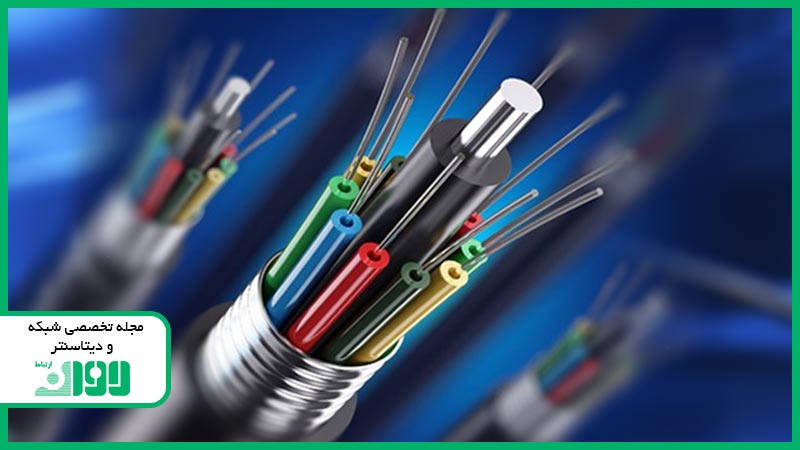
اتصال دهندههای جداشدنی
این نوع از اتصال دهندهها از یک کانکتور و آداپتور تشکیل شدهاند که نمونه آن را میتوانید در شکل زیر مشاهده کنید. کانکتورها انواع مختلفی از جمله SC,LC,FC,ST,SC-RJ و MPOها هستند که هر کدام آداپتور مخصوص خود را دارند. کانکتورهای MPO برای اتصالات موازی و بیشتر برای سرعتهای 40 و 100 گیگ استفاده میشوند.
.


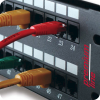






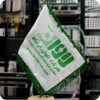







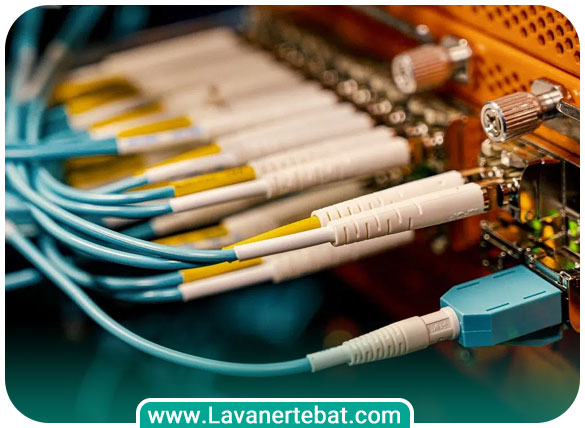
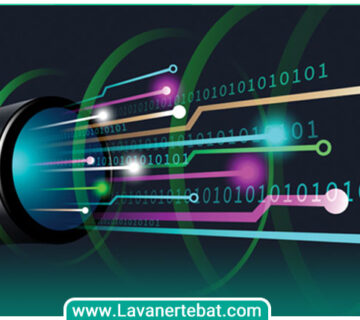
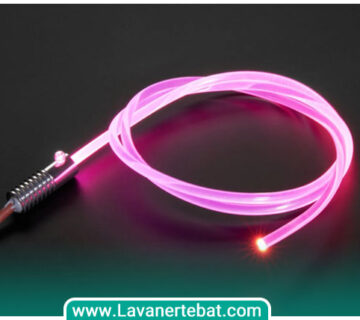
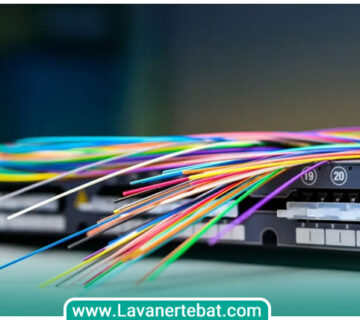
بدون دیدگاه